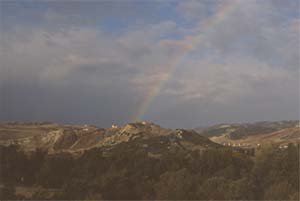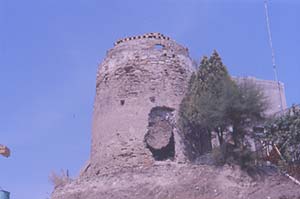 Fortifications
Fortifications
 Isolated
fortifications
Isolated
fortifications
Every fortification
satisfies the needs of a wider and more complex defence system. Therefore, the
design of military artefacts depended on the choice of location, construction
typology and the role that a fortification was meant to play. In addition to
the urban fortifications and those situated close to urban settlements, some
towers survive that now appear isolated but probably were once part of a more
complex and interconnected defence system (for example, the network of coastal
towers or those located along the course of the river Biferno). Architectural
traces survive on outcrops of rock in impervious, and therefore naturally
defensible positions, which are still hard to reach and sometimes even to
recognise because of their dilapidated state; or more rarely, on fluvial
plains (as at Celenza sul Trigno). These are fortified elements that were once
used for sighting or the control of traffic (located on elevated ground such
as at Oratino on the Ponte della Zittola-Lucera or the Venafro-S.Croce
sheep-tracks), or for the control of energy and natural resources, especially
water but also timber and quarries. Occasionally, the tower is the only
surviving element of a larger fortified unit which has been lost (as in
S.Croce di Magliano or Pietrabbondante). In addition to the surviving
artefacts, there were fortifications of which no trace remains, but which are
recorded in the archive documents and ancient maps (for example the Zeppa
tower, built in 1175 and later destroyed).
|
 |
Castellerce |
|
 |
Magliano |
|
 |
Termoli |
|
 |
Venafro |
|
|
 Four-sided
towers
Four-sided
towers
 Circular
towers
Circular
towers



![]() Fortifications
Fortifications![]() Isolated
fortifications
Isolated
fortifications




![]() Four-sided
towers
Four-sided
towers
![]() Circular
towers
Circular
towers